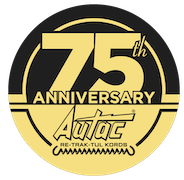Extended extension cords play a vital role in powering devices or appliances over longer distances. These cords offer the flexibility and reach required for various applications, whether indoors or outdoors. In this comprehensive guide, we’ll delve into the different types of extended extension cords, key features to consider, best practices for usage, common applications, and more.
Understanding Different Types
Long Reach Extension Cord
A long-reach extension cord is designed to provide extended length, surpassing the standard range of conventional cords. This extra length eliminates the need for multiple cords or constant unplugging and replugging, making it ideal for tasks that require maneuvering around large spaces.
Extra-Long Power Cord
An extra-long power cord goes beyond typical lengths, catering to scenarios where extensive reach is essential without compromising on power delivery. Whether it’s powering tools in a workshop or connecting appliances in a spacious kitchen, an extra-long power cord offers the flexibility needed for various applications.
Extended Outdoor Extension Cable
Extended outdoor extension cables are specially crafted to withstand outdoor conditions, such as moisture, heat, and cold. With durable materials and weather-resistant construction, these cables provide reliable power delivery in any outdoor setting, making them indispensable for outdoor projects and events.
Long-Distance Extension Cord
A long-distance extension cord is engineered to maintain power delivery over extended distances without voltage drop or loss of efficiency. Whether you’re working on a construction site or setting up outdoor lighting, a long-distance extension cord ensures reliable power supply over long ranges.
Lengthy Power Cable
Lengthy power cables offer extended reach combined with robust construction for durability and safety. With various lengths available to suit different needs, these cables are versatile and suitable for a wide range of applications, both indoors and outdoors.
Key Features and Considerations
Length and Gauge
When selecting an extended extension cord, consider both the length and gauge of the cord. Longer cords may require a thicker gauge to maintain proper power delivery and prevent voltage drop over extended distances. It’s essential to choose a cord that matches your specific requirements.
Indoor vs. Outdoor Use
Consider where you’ll be using the cord. Indoor cords may not have the same level of weather resistance as outdoor ones, so it’s crucial to select the appropriate type based on your intended application. Outdoor extension cords are designed to withstand outdoor conditions and provide reliable power delivery in challenging environments.
Safety Features
Safety is paramount when using extended extension cords. Look for cords with grounded plugs, surge protection, and flame-resistant materials to ensure safe and reliable operation. These safety features help prevent electrical hazards and protect both your devices and your property.
Best Practices for Usage
Proper Storage
When not in use, coil the cord neatly to prevent tangling and damage. Proper storage helps prolong the lifespan of the cord and ensures it remains in good condition for future use. Avoid kinks and twists, as these can weaken the cord and affect its performance.
Avoiding Overloading
Be mindful of the devices you’re connecting to the cord and ensure they do not exceed its power capacity. Overloading the cord can lead to overheating, voltage drop, and potential hazards. Check the power requirements of your devices and select a cord that can safely accommodate the load.
Common Applications
Extended extension cords find applications in various scenarios, both indoors and outdoors. From powering tools and appliances to providing temporary power sources for events and gatherings, these cords offer the flexibility and reach needed for a wide range of tasks. Whether you’re working on a DIY project, hosting an outdoor event, or powering equipment on a job site, an extended extension cord is an indispensable tool.
Conclusion
Extended extension cords are essential for powering devices and appliances over longer distances. With their extended reach, durability, and safety features, these cords offer reliable power delivery for various applications. By understanding the different types, key features, and best practices for usage, you can select the right cord for your specific needs and ensure safe and efficient power distribution.
FAQs
Can I use an extended extension cord indoors?
Yes, extended extension cords can be used indoors as long as they are rated for indoor use and comply with safety standards.
What is the maximum length of an extended extension cord?
The maximum length can vary depending on the specific cord and its gauge. It’s essential to check the manufacturer’s recommendations for optimal performance.
Can I connect multiple extended extension cords together?
It’s generally not recommended to daisy-chain extension cords, as this can increase the risk of overheating and electrical hazards. Instead, use a single cord that meets your length requirements.
Are extended extension cords safe for outdoor use?
Yes, provided they are specifically designed and rated for outdoor use. Look for cords with weather-resistant construction and appropriate safety certifications.
How do I determine the right gauge for an extended extension cord?
Consider the power requirements of the devices you’ll be using and choose a cord with a gauge that can safely accommodate the load without voltage drop or overheating.




Recent Comments